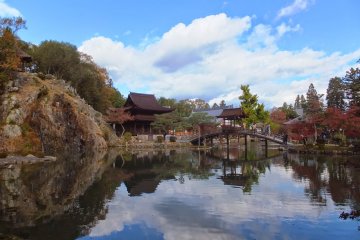

Gifu
Scenic Shirakawa-go and Gero's hot springs
Top Attractions in Gifu
Upcoming Gifu Events

Gifu Light Story 2026
Gifu City is set to shine this winter with the return of Gifu Light Story, an illumination event that first started in 2020 to..

Subzero Forest Ice Festival 2026
The Subzero Forest Ice Festival in Takayama is held on the second Saturday of February every year, and it combines icicles and lights..
Where to eat in Gifu

Restaurant Ebisu in Takayama
Anne LauenrothRestaurant Ebisu in Takayama - handmade soba since 1898 in a beautifully preserved building in Takayama's historical merchant..

Heianraku
Anne LauenrothEnjoy delicious Chinese, Japanese and vegetarian food at lovely Heianraku, a cozy restaurant in Takayama.

Center 4 Hamburgers - Hida's Best
Amber EchevarriaA favorite of both locals & travelers, meat lovers and vegetarians - the best burger & fries in town. They even have free wifi!
Places to stay in Gifu

Hot Springs & Green in Hirayu Onsen
Selena HoyOkuhida Onsen – nature and hot springs in gorgeous Gifu

Shirakawa-go's Yamamoto-ya
Tomoko KamishimaShirakawa-go’s Yamamoto-ya is a restaurant in spring and summer, and becomes a guesthouse in winter. It is located in the hear..

A Stay at the Kazeya Ryokan
Jonathan JahnkeA Stay at the Kazeya Ryokan, a traditional Japanese inn in the heart of Gifu's Hida Mountain Range.
Latest Gifu Reports

Bokka no Sato
Kim BergströmLocated on the Hirugano Plateau in Gifu Prefecture, Bokka no Sato is a family-friendly park that offers a mix of nature, animal..

Utsue 48 Waterfalls Prefectural Park
Kim BergströmLocated in the Takayama region of Gifu Prefecture, Utsue 48 Waterfalls Park spans approximately 800 hectares of pristine natural..

Mont Deus Snow Park
Kim BergströmMont Deus Ski Park in Takayama is a family-friendly ski destination offering wide, beginner-friendly slopes with excellent vis..
























